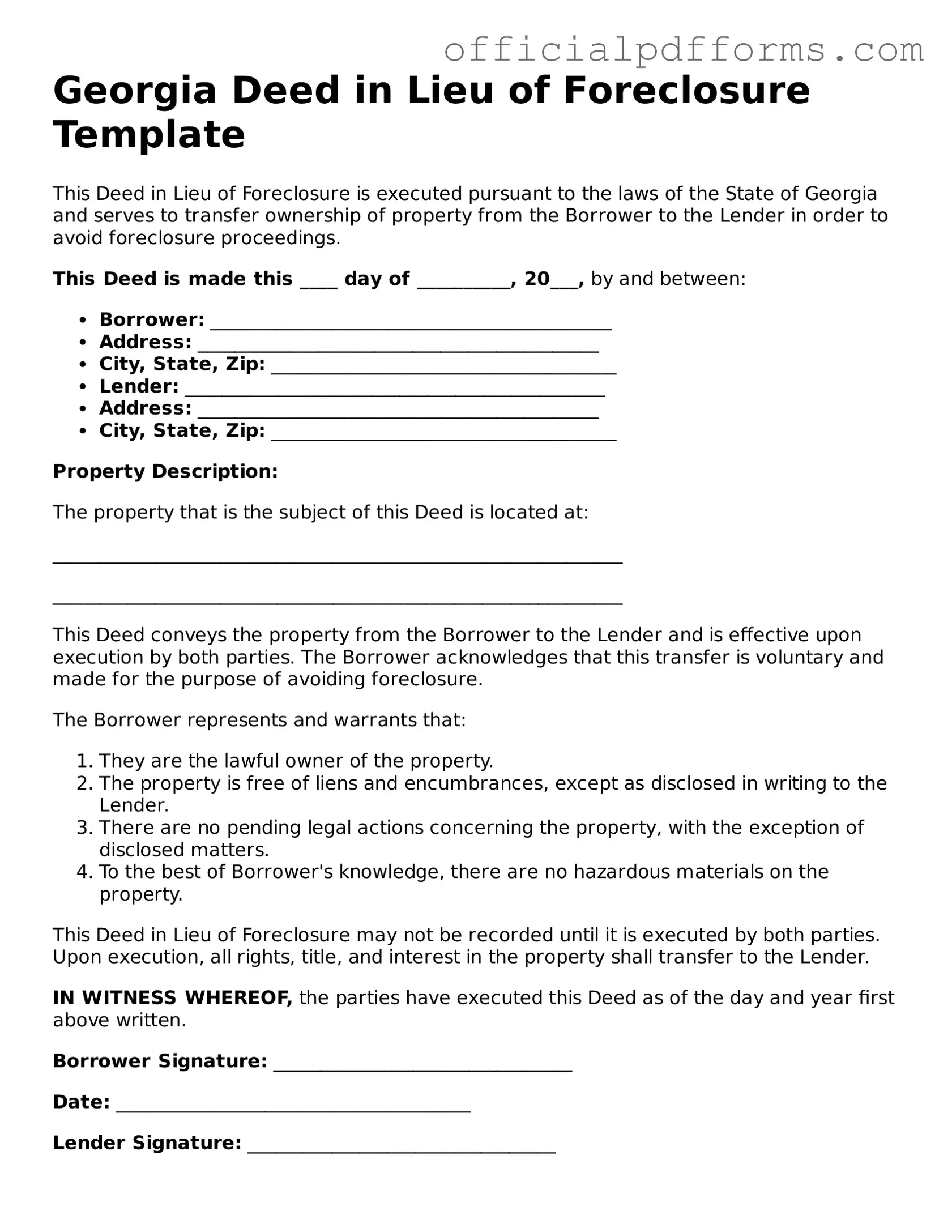What is a Deed in Lieu of Foreclosure in Georgia?
A Deed in Lieu of Foreclosure is an agreement between a homeowner and a lender where the homeowner voluntarily transfers the property title to the lender to avoid foreclosure. This process allows the homeowner to walk away from the mortgage obligation while the lender takes ownership of the property, typically to recover their losses.
Who can use a Deed in Lieu of Foreclosure?
Homeowners facing financial difficulties and unable to keep up with mortgage payments may consider this option. However, both parties must agree to the deed transfer, and the homeowner must be current on mortgage payments or have a good reason for the default. It’s essential to consult with your lender to see if this option is available for your specific situation.
What are the benefits of a Deed in Lieu of Foreclosure?
There are several advantages to a Deed in Lieu of Foreclosure:
-
It can help avoid the lengthy and stressful foreclosure process.
-
The homeowner may be able to negotiate a more favorable outcome, such as debt forgiveness.
-
It typically results in less damage to the homeowner’s credit score compared to a foreclosure.
-
The process can be quicker and less costly for both the homeowner and the lender.
What are the potential drawbacks?
While there are benefits, there are also some drawbacks to consider:
-
Homeowners may still face tax implications if the lender forgives any remaining debt.
-
Not all lenders may accept a Deed in Lieu of Foreclosure.
-
Homeowners may need to vacate the property quickly, which can be stressful.
How do I initiate a Deed in Lieu of Foreclosure?
To start the process, you should first contact your lender and express your interest in a Deed in Lieu of Foreclosure. They will likely require you to provide financial documentation to assess your situation. If they agree to the arrangement, they will guide you through the necessary steps and paperwork.
What documentation is required?
Typically, the lender will request the following documents:
-
Proof of income and financial hardship.
-
Current mortgage statements.
-
Property tax information.
-
Any other relevant financial documents.
Be prepared to provide these documents promptly to facilitate the process.
Will I be responsible for any remaining mortgage balance?
In many cases, lenders may agree to forgive any remaining balance after the Deed in Lieu of Foreclosure. However, this is not guaranteed and can vary based on the lender’s policies and your specific circumstances. Always clarify this aspect with your lender before proceeding.
How does a Deed in Lieu of Foreclosure affect my credit score?
While a Deed in Lieu of Foreclosure is less damaging than a foreclosure, it will still have an impact on your credit score. Generally, it may result in a score drop, but the extent can vary based on your overall credit history. It’s wise to check with credit reporting agencies to understand how this action may affect you specifically.
